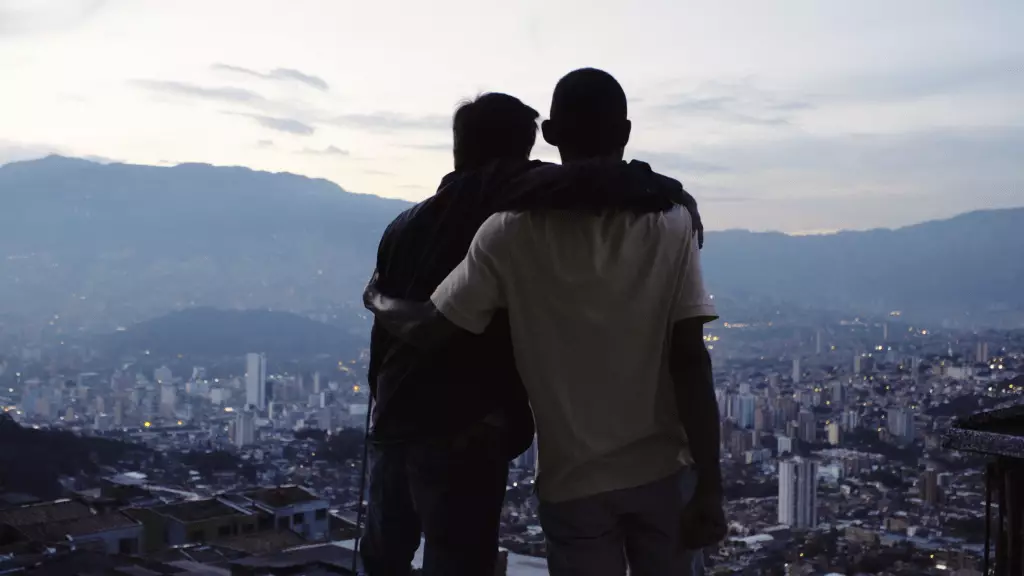In a profound step towards healing, a special screening of the documentary “Lara: The Man Who Tried To Save Colombia” took place in Bogotá, commemorating the 41st anniversary of the assassination of Rodrigo Lara, a politician whose life was tragically cut short by the notorious Pablo Escobar. This event is not just a cinematic moment; it represents a crucial intersection of personal and collective histories that have shaped Colombia’s turbulent narrative. Produced by Banijay, this film seeks to weave together two seemingly opposing narratives — that of Lara’s son, Jorge, and Escobar’s son, Sebastián Marroquín, culminating in a poignant exploration of forgiveness amidst a backdrop of violence and loss.
A Deeply Personal Story
The film’s narrative structure employs a unique double perspective approach, allowing the audience to witness the heartbreaking yet hopeful journey of two young men grappling with their fathers’ legacies. Jorge Lara, initially consumed by feelings of vengeance following his father’s state-sponsored assassination, undergoes a transformative realization that connects him with Marroquín. This insight reveals a common thread in their lives, demonstrating that even amidst bloodshed and betrayal, there exists a possibility for understanding and connection. Jorge’s untimely death before the film’s completion adds a layer of dramatic irony and tragedy, underscoring both the personal and societal ramifications of unresolved grief.
The documentary takes on an additional dimension as it highlights systemic failures within Colombia’s justice system. The Lara family’s ongoing quest for accountability not only serves as a personal narrative but also as a broader critique of institutional corruption. Jorge’s death while clutching notes he believed contained information on those complicit in his father’s demise starkly illustrates the ongoing fight for justice that remains unfulfilled. Gavan, the documentary’s director, articulates this struggle, calling it a “call to action” for a government that has frequently fallen short in its duty to protect its citizens and dispense justice equitably.
Resistance Through Art
The film’s co-founders, Lina and Carolina Flórez García, emphasize that “Lara: The Man Who Tried to Save Colombia” transcends mere storytelling; it becomes an act of resistance. Through Jorge’s harrowing experiences, the documentary not only sheds light on the personal consequences of systemic corruption but also amplifies a broader desire for societal healing. The filmmakers advocate for a rigorous examination of the past, arguing that only through facing these painful truths can Colombia achieve lasting peace.
This perspective aligns with the historical context of Colombian society, where discussions surrounding narcotrafficking, political assassinations, and social upheaval have often been met with silence or dismissal. The foundation established in honor of Rodrigo Lara embodies a concerted effort to keep his legacy alive, ensuring that the fight against impunity is not forgotten. Rather than succumb to oblivion, the film insists on addressing the “imposed oblivion” that attempts to erase such difficult histories.
Global Implications of Local Pain
The screening event attracted attention not only from local figures and politicians but also from international diplomats, showcasing the global implications of Colombia’s tumultuous narrative. By drawing in representatives from multiple countries, the film underscores the interconnectedness of Colombia’s history with the global drug trade and the far-reaching consequences of violence. The international audience is given the opportunity to engage with this complex story, expanding the conversation beyond Colombia’s borders.
As Simon Cox from Banijay Rights articulates, the significance of this project lies in its dual nature — it is both a tale of reconciliation and a testament to resilience against the shadows of a painful past. Such a narrative resonates well beyond Colombia, reminding us that stories of forgiveness and the quest for justice are universal themes relevant to societies grappling with their histories.
The powerful convergence of Jorge and Sebastián’s stories in this documentary serves as a mirror reflecting not just Colombia’s past but also its aspirations for a future forged from understanding rather than animosity. Their reconciliation stands as a beacon of hope — a testament to the potential for healing in the aftermath of devastation. Through this lens, “Lara: The Man Who Tried To Save Colombia” is more than just a documentary; it is a compelling plea for accountability, understanding, and ultimately, love in a world too often defined by division.
